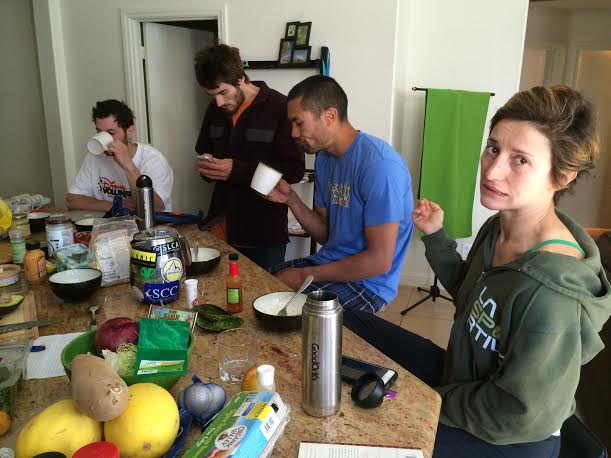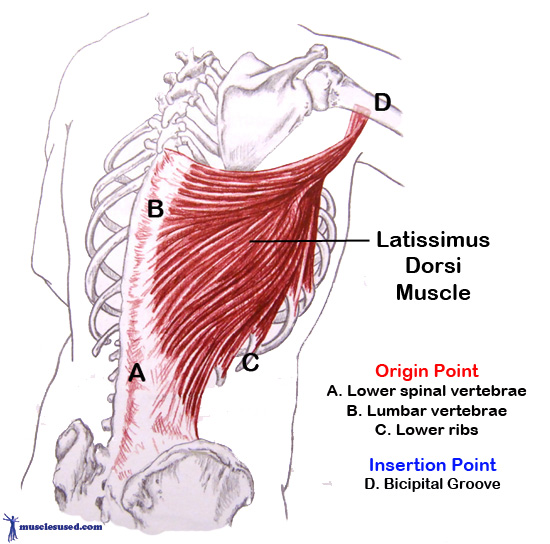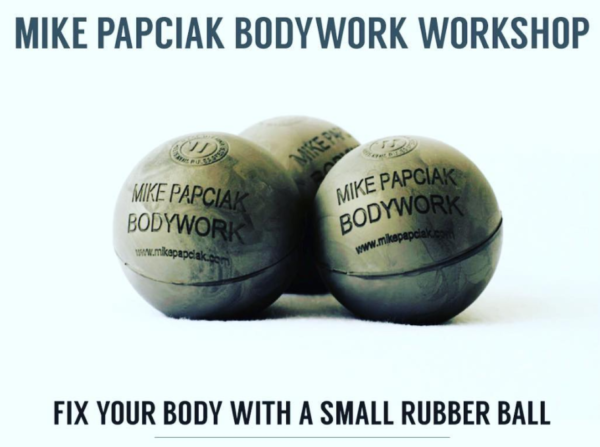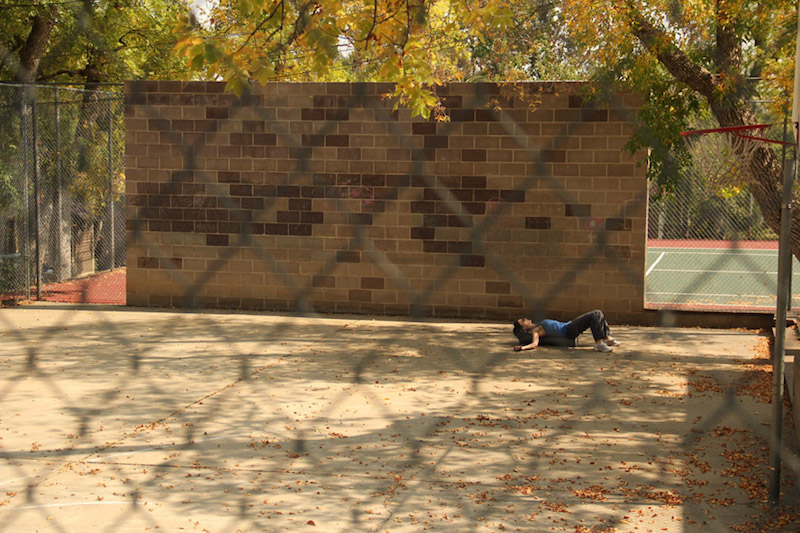Today we’re bringing you the second installment in a 3-part series from Vikki Glinkskii, one half of The RV Project’s dynamic duo. The RV Project is Vikki’s and Spenser Tang-Smith’s adventure across America in search of the country’s best climbing and most interesting people. If you’ve been ignoring a nagging shoulder pain (or any pain, really), or if you’re a new climber, this post series is for you. You can find Part 1 here.
We arrived in Colorado after four months on the road. I had seen strength gains, but not as great as I would have liked. In the Bay Area I was climbing in the gym a couple times per week; now I was climbing all the time either in the gym or outside. Still, I wasn’t really sending. And it wasn’t even the lack of sending that was bothering me, but the fact that I didn’t feel stronger. I felt like something was holding me back. Maybe it was too much climbing and not enough training?
We began training on our rest days, but my shoulder kept acting up. It got to the point where an action as simple as opening the truck door would aggravate it and I was unable to do a push-up without pain. The pain, combined with the gut feeling that the hunch in my back and excessive winging in my shoulder blades were not normal, sealed the deal. Something was wrong. I knew it, and it was time to stop ignoring it.

Enter Jeff Giddings of Adams & Giddings Physical Therapy. A couple of long-term climbers had seen Giddings in the past and I felt reassured because he was a climber himself.
Jeff was soft-spoken man, but not afraid to tell it how it is. I could immediately tell from the worry in his eyes that what was going on with me was serious. Thankfully, it wasn’t too serious: no surgery, no MRI, no tear, nothing permanent—yet. Operative word: YET. He patiently answered all my questions and even brought out his spine and shoulder models to teach me about the muscle imbalances happening in my body.
My hunching, excessive winging, and shoulder pain were all related. Like many climbers, I had (and still have) overdeveloped lats. No surprise there. But, for whatever reason, when I began climbing I didn’t use my back muscles (specifically the ones between the shoulder blades) and overused my lats and teres major. Now these muscles were aggro and didn’t want to let go.
Here’s what I learned: the lat (aka latisimus dorsi) actually wraps all the way up the front of your shoulder. My lat had a firm hold on my shoulder and was pulling it forward, causing it to twist. Twisting is bad, unless you’re at a dance in the ’50s. Jeff made it clear that if I didn’t fix these issues, things were going to get worse, fast. I was on the road to surgery.

Here’s a pic of the right lat muscle. This shows how the lat muscle actually wraps around the front of the shoulder—its attachment point is at the bicipital groove, at the front of the body and at the top of the humerus (upper arm bone). This is achieved by tendons wrapping around the underside of the humerus.

Here’s the teres major. Again, Jeff’s description of my muscle imbalances made sense. You can see that the teres major connects to the front of the humerus. If it’s tight (and oh man, was it tight), it is going to pull your shoulders down.
Other issues included incredibly weak upper back muscles (those ones I didn’t—but should—use while climbing, like the rhomboids and lower traps) and a curving of my thoracic spine (mid-back). But we needed to deal with the tightness first—my lats had to be forced to let go. So, the mobilization and needling began. That first office visit, Jeff focused on my left side, since that was where the pain was occurring. He needled my lat and teres major, as those were the main pressure points. I knew then that he wasn’t full of it, because when he found those trigger points, man, did they hurt—even causing inadvertent twitching of one leg or the other! It was awesome.
For those of you who are saying, “needling…WTF?” Needling is short for Trigger Point Dry Needling, or TDN. A very fine acupuncture needle is used to relax or shut down painful or knotted areas in your muscles. Most of us are walking around with knots in certain muscles (that hard ball that won’t go away). If you don’t address these knots with massage therapy, they can harden further and be extremely difficult to release. Most of the time, you can still choose to do aggressive massage therapy over needling; needling is just a faster solution. If you have never heard of needling, you probably have either never needed it, or live in one of the four states that prohibit physical therapists from practicing it…California included.

Another option for releasing tight muscles is a lacrosse ball. Magic Hands Mike Papciak (aka badass bodyworker) writes some great tips on his Facebook page about how to use these babies; I especially like this one. He also intermittently holds some very helpful workshops at Touchstone gyms (like the ones going on at the time of this publication!). His Facebook page will keep you posted.
A Mike quote that rings really true is this: “A tight muscle is a weak muscle.”
I took my exercises seriously and did them religiously. When I came in for my next appointment, Jeff was psyched at the improvement, which made me psyched too. Now my right side was more tight than my left…funny that. Apparently, both sides were almost equally imbalanced. According to Jeff, it was pretty much a crapshoot for which shoulder started experiencing pain first. Alright, more mobilization of the shoulder cap and more needling. This time, more extensive needling on both sides, including both my lats, teres major, the muscles over each scapula, and my upper traps. I could barely drive home I was so sore. The soreness was rough for the rest of the day, but I felt much better by the evening and even better the next morning.

I felt incredibly thankful and relieved to have found someone who was knowledgable and not scared to explain why each exercise was important. My shoulder felt very weak since I was loosening tight muscles, but my scapular winging had visibly improved, which was reaffirming. As we wrapped up our summer in Fort Collins, I was feeling positive about being on the right track to putting my shoulder issues to rest. We were heading to boulder in Joe’s Valley, Utah next and I couldn’t wait.
Stay tuned for Part 3, in which Vikki outlines the specific exercises and stretches that kept her on the road to recovery.

